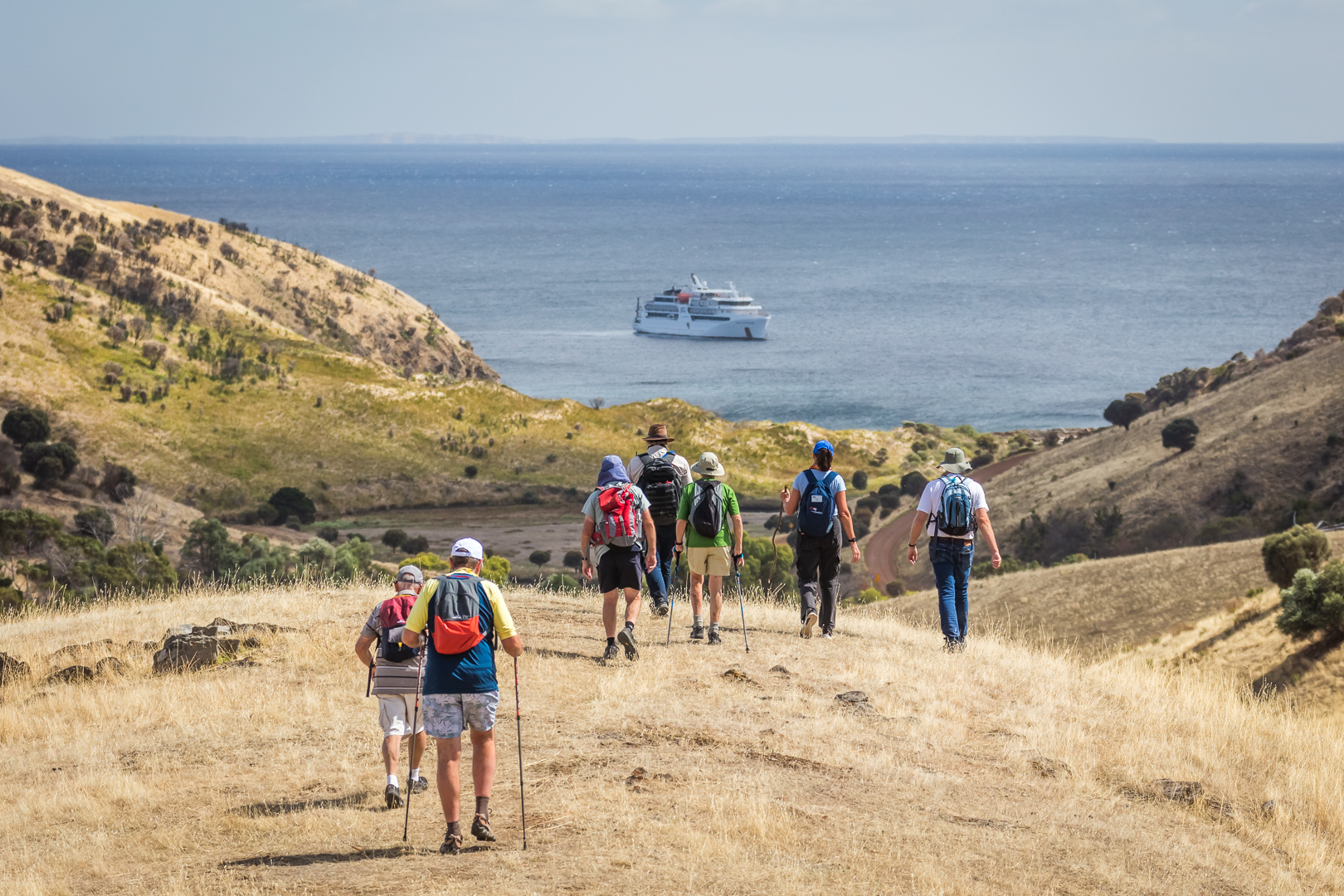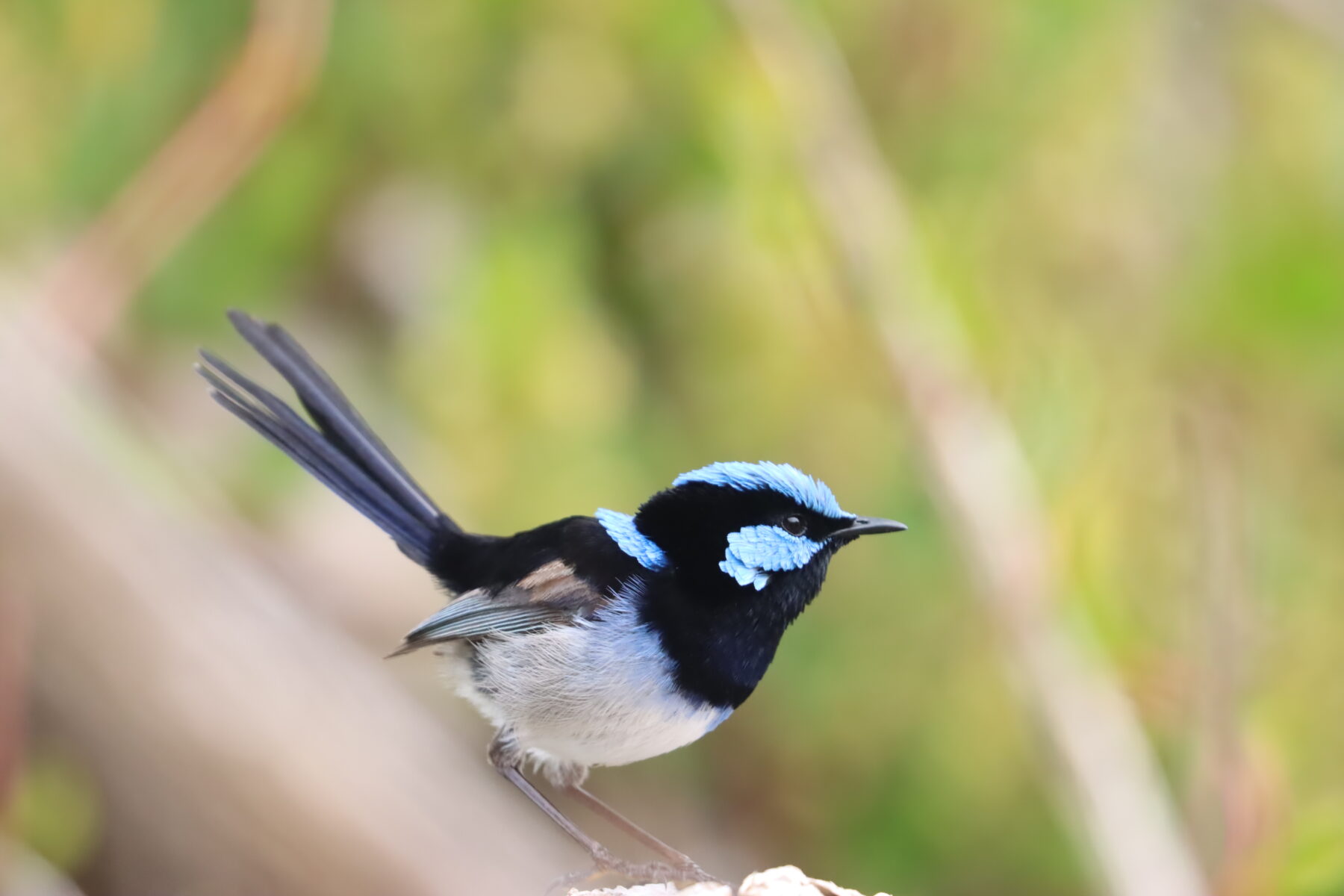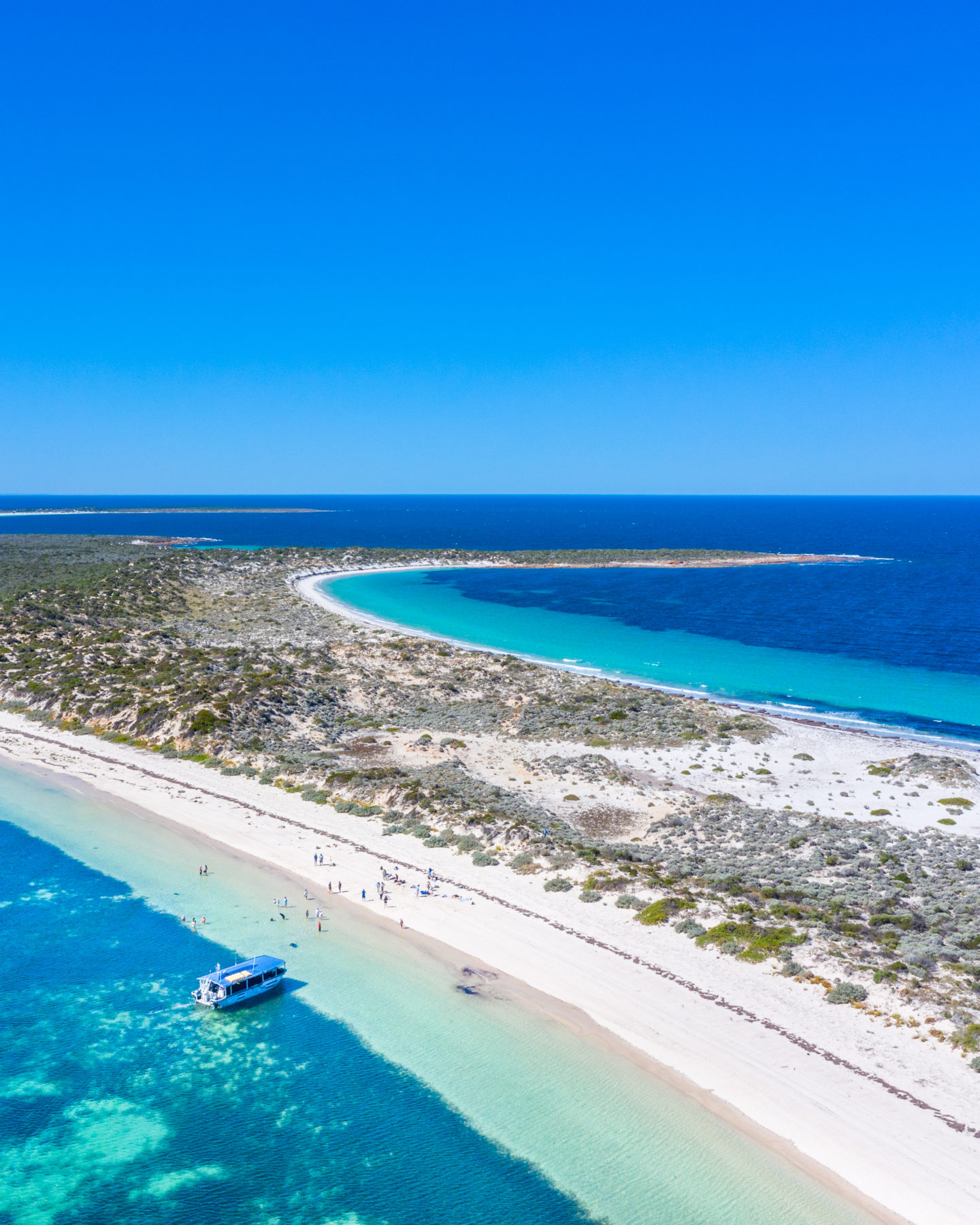The 300 islands of South Australia

Somewhere around latitude 30, just before you encounter the Roaring 40s, the Furious 50s and the Screaming 60s, sit South Australia’s 300+ islands.
But don’t be fooled by their relative quiet. These islands hold a particular kind of magic which has been created by the powerful wind and waves of the Southern Ocean and they are home to unique animal and plant species many northern Australians have never encountered.
Coral Expeditions Guest Lecturer Quentin Chester, who lives on Kangaroo Island, says South Australia’s islands are a “well-kept secret”.
“We’ve got a lot of islands that are out of sight, out of mind,” he says.
“It is about the mystique of them but for people, particularly from interstate, it is an interesting breakthrough moment to see a part of Australia that’s very special but there’s so little known about it.
“The South Australian coastline is the product of a lot of natural elements. We see that force of that wave action which has shaped the coast over millions of years.
“You have wind-swept islands, limestone cliffs and granite islands. You have islands that are 300m high with sea cliffs on them. There is this real sort of visual drama”.
“I call it the Kimberley of the south. It is a remote and unforgiving landscape. We’ve got the biggest mangrove communities in southern Australia and some of the largest sea grass beds in the world.”
The Southern Ocean
Quentin says sailing the Southern Ocean adds to the authenticity of the expedition experience.
“We’re not in the roaring 40’s, but in the tricky 30’s, and the water can be benign and lovely at times and quite dramatic with strong swell energy at other times.
“We can see up to six-metre swells down there but our ships are made to ride the sea well, rolling through the peaks and valleys and sturdy and stable. A heavy ocean becomes part of the experience.”

Flora and fauna
Despite being so remote and rugged, these granite islands are also home to incredible animal and plant species.
“These islands have a lot of vegetation. It’s not a tropical paradise with palm trees and lagoons, it is low coastal mallee scrub, eucalypts, acacias and flowering plants and bushes which must thrive in the the elements,” Quentin says.
“In November we see all this coastal vegetation in flower and even though it’s a quite hostile environment, there is a lot of pretty colour. You look across the coastline and it looks like a colourful tapestry with splashes of red, yellows and greens.
“There are a lot of birds including Pacific gulls. These are big gulls and are not something people from northern parts of Australia are used to. They are quite fun characters, much bigger than a seagull and one of the biggest gulls in the world.
“If you were just on a large cruise ship you wouldn’t get the full story but we get up close and personal to the shoreline to see basking sea lions on rocks and seals darting through the shallows. There’s also an interesting history to some of these islands that were lived on and farmed.
“These places became islands in the last ice age and Indigenous people saw their world changing. That’s a fairly powerful thing for people to get their heads around.”

Quentin says his favourite elements of the islands visited by Coral Expeditions include:
Troubridge Island
“It is quite hard to reach despite not being far from the mainland. There is a great old lighthouse that we talk about and often there is a sea lion on that beach that we can introduce people to.”
Kangaroo Island
“Because it is my home base, I am very attached to Cape Willoughby. I live near Antechamber Bay which is a lovely north-facing beach with subdued terrain and coastal vegetation.”

Reevesby Island
“It is often more sheltered, and as a result it is a nice chill-out place where can go for a relaxed beach comb, swim or paddle in a sea kayak.”
Flinders Island
“It is the anchor point for our trip and storytelling. The family which owns the island have a great personal history there and are switched on abalone divers who love sharing their abalone with us, but it’s also about the story of two brothers on a pathway to rehabilitate the place.”
Boston Island
“That’s a new one for us and I think it is another good example of a family who has had a living connection going back to the ‘50s and are busy doing regeneration there. It is like a little world of its own. There is quite a lot of intact vegetation and birdlife and great geology there.”
Pearson Island & Wedge Island
“These are places we try to visit on expeditions. These are powerful places. We don’t land at Pearson but we do sometimes bring the ship in close as there is an interesting story to tell and it is an important place for rock wallabies, birds and sea lions. Here there’s big granite monuments – it’s like an Outback landscape coming out of the sea. Wedge Island is a wedge of limestone which faces the open ocean. With a bit of luck we go ashore there and show people the rock wallabies.”

On the horizon
Quentin says Coral Expeditions is still exploring new horizons in South Australia and its many islands.
“To the north of Flinders Island you’ve got Nuyts Archipelago and the Dutch were there in the 1600s way before Matthew Flinders. There’re also quite a few islands in the Joseph Banks group that have some great things to look at. Thistle Island, near the bottom of the Eyre Peninsula is the third biggest island in South Australia and has wonderful wildlife and views,” he says.
“Of the islands here, at least half of them are potentially accessible by expedition ship. Very few islands are inhabited or developed, so there’s a wild character to the whole region. Some, quite rightly, have restricted access to look after precious wildlife and habitats.”
South Australia’s islands and gulf waters are amongst the best-kept secrets of the Australian coastline. With 5000km of deserted shoreline and more than 300 islands, there’s a huge diversity of natural wilderness to explore including spectacular bays and beaches, remote islands and stunning sea cliffs. Best of all, most of it is wild and unspoilt. That means there’s a real sense of adventure, seclusion and a vast array of wildlife. Many of the islands are important sanctuaries for birds, kangaroos, wallabies, seals and sea lions. Along the way, there are many opportunities to indulge in the tastes of South Australia with fresh local seafood from the source and hand-selected local wines from the renowned South Australian vineyards.
Join Coral Expeditions on board our expedition ship Coral Geographer to explore the remote and rugged islands off our southern coastline on Wild Islands of South Australia voyage.
View itinerary, fares and live availability online at www.coralexpeditions.com
FROM $6,710pp, departing Adelaide on 4, 14 & 24 Nov and 4 December 2023.
Brought to you by Coral Expeditions – to book call 1800 079 545 or +61 7 4040 9999 or www.coralexpeditions.com




